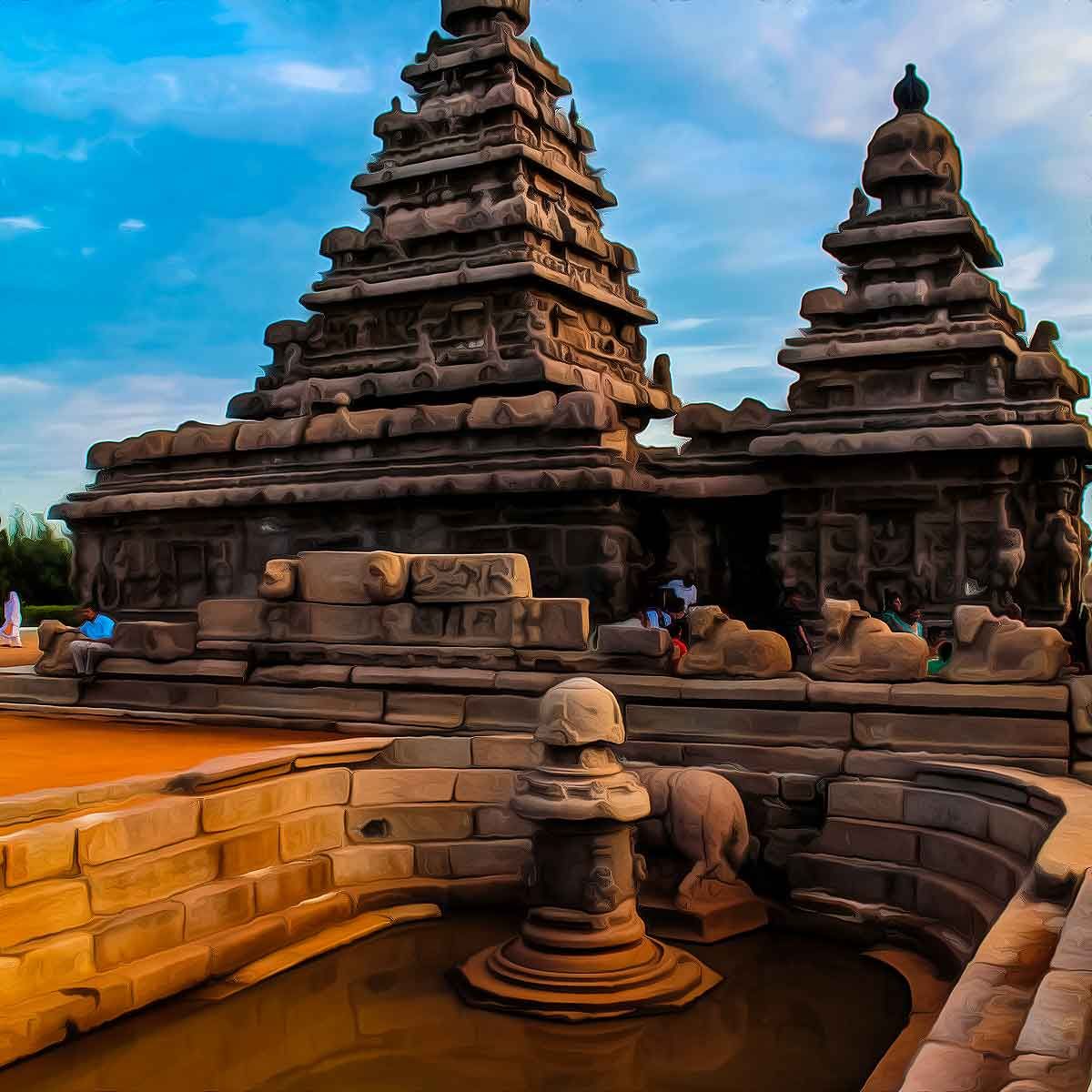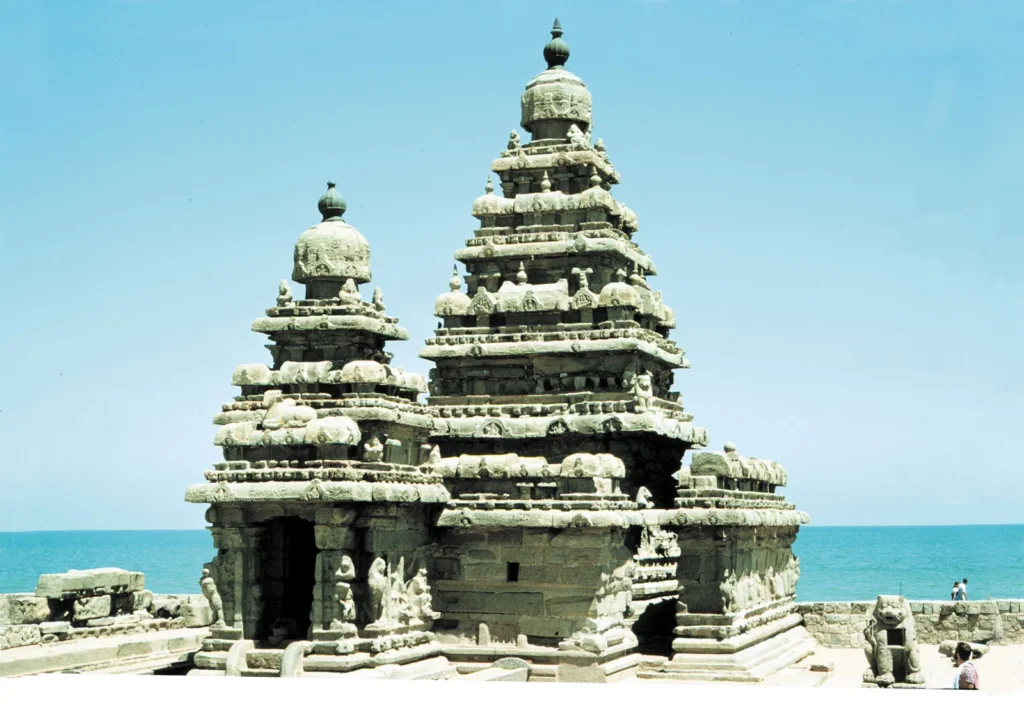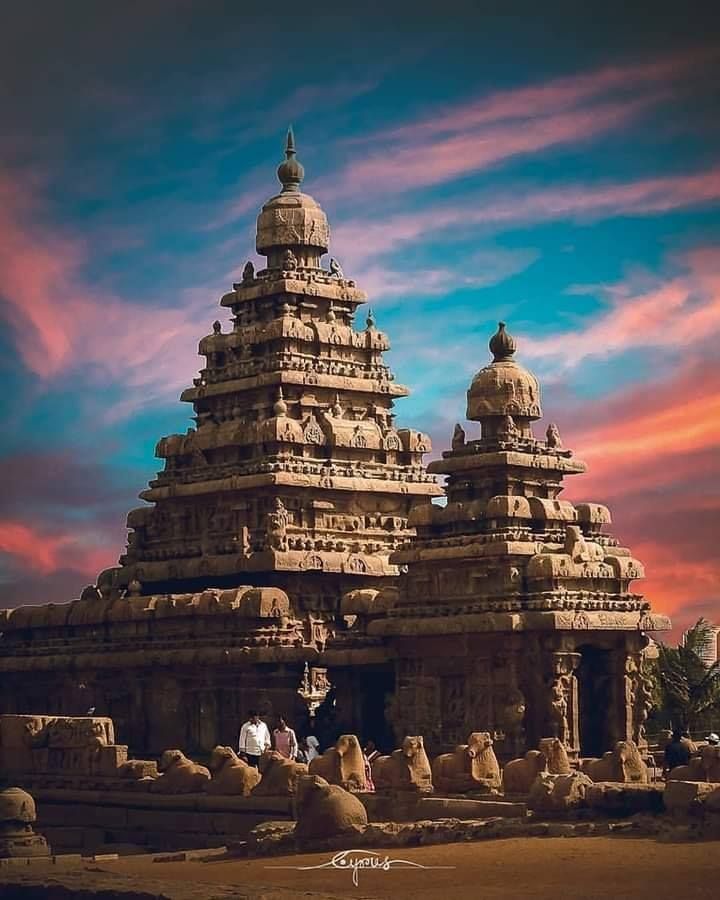
The Mahabalipuram Shore Temple, located in Mahabalipuram (Mamallapuram), Tamil Nadu, is an iconic structure that epitomizes India’s rich architectural and cultural heritage. It is part of the UNESCO World Heritage Site known as the “Group of Monuments at Mahabalipuram” and is one of the oldest stone temples in South India, dating back to the Pallava dynasty.
Overview of the Shore Temple
- Location: Mahabalipuram, Tamil Nadu, India.
- Constructed: Circa 700–728 CE during the reign of Narasimhavarman II (Rajasimha), a Pallava king.
- Architectural Style: Early Dravidian architecture, carved from granite blocks.
- Significance: A testament to maritime history, Pallava art, and early Hindu temple design.
Historical and Religious Significance
- Pallava Dynasty:
- The temple is a masterpiece of Pallava craftsmanship, showcasing their patronage of art, architecture, and religion.
- Hindu Devotion:
- The temple venerates Lord Shiva and Lord Vishnu, reflecting the Pallavas’ dedication to Shaivism and Vaishnavism.
- Maritime Heritage:
- The Shore Temple is believed to have been a landmark for ancient maritime traders navigating the Coromandel Coast.


Key Features
Three Shrines:
- The Shore Temple consists of two main shrines dedicated to Lord Shiva and Lord Vishnu and a third minor shrine.
- The prominent shrines are oriented towards the east to face the rising sun, reflecting the temple’s connection to cosmic cycles.
- The Vishnu shrine houses a reclining Vishnu figure carved from a single stone.
Granite Construction:
- Unlike other monuments in Mahabalipuram that are rock-cut, the Shore Temple is built with granite blocks and demonstrates Pallava mastery of stone construction.
Intricate Carvings:
- The walls and towers are adorned with mythological motifs, sculptures of deities, and figures depicting daily life and maritime activities.
Shikhara (Towers):
- The pyramidal towers or vimanas are characteristic of Dravidian temple architecture, with the tallest reaching about 60 feet.
- The shikhara of the main shrine is crowned with a kalasha, symbolizing divinity.
Sculptures of Nandi (Sacred Bull):
- Rows of Nandi statues (bulls associated with Lord Shiva) line the temple, enhancing its grandeur.
Surrounding Features:
- The temple complex is surrounded by a low wall carved with mythical sea creatures and deities.
- The setting along the Bay of Bengal provides a dramatic backdrop, with the temple enduring centuries of sea spray and monsoon winds.
